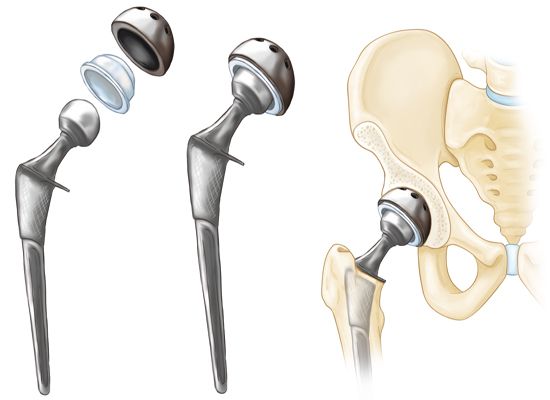Which type of hip replacement is right?
Hip pain which is caused by arthritis is one of the most common diagnoses treated by physical therapists.
In most cases, treatment results in significant reductions in pain and disability, leading to improved participation in leisure activities like gardening, golf and tennis.
In very advanced cases of arthritis, however, replacement of the ball and socket part of the hip may become necessary after all conservative interventions have failed. Total hip replacements (THR) are one of the most common elective orthopedic procedures performed in the United States, with about 300,000 being performed in the past year.
When speaking to their surgeon, patients often have questions about the different surgical techniques used to replace the hip joint.
To learn more about that topic, I spoke to Dr. Austin McPhillamy. Dr. McPhillamy is an orthopedic surgeon at Bay Street Orthopedics and treats patients in Charlevoix and Petoskey.
MYM: What are the main techniques currently in use for replacing a hip?
McPhillamy: “As far as techniques/approaches for hip arthroplasty are concerned, they are still largely done through a posterolateral approach or a direct anterior approach. To a smaller degree, surgeons will use an anterolateral approach. The percentage of hip replacement surgeons being trained to perform direct anterior approach in residency and fellowship is increasing dramatically and thus I see a time in the near-future where this will become the new majority.”
MYM: What is the difference between an anterior and posterior approach?
McPhillamy: “A direct anterior approach utilizes an intermuscular interval in the front of the hip to access the hip joint, allowing a small surgical window and no direct cutting or splitting of the muscle. A posterior approach requires splitting of the gluteus maximus and detachment of posterior hip muscles and joint capsule to access the hip.”
MYM: What are some benefits of an anterior approach, and are there any potential risks?
McPhillamy: “Proven advantages seen in the scientific literature include a decrease in instability or dislocation rates, early post operative pain relief, a shorter recovery (i.e. first 6 weeks), and higher patient satisfaction scores.”
“Potential risks include slightly higher blood loss although not enough to necessitate transfusion. Risks of venous thromboembolism and deep infection remain very serious and similar among all available surgical approaches.”
MYM: Has the research proven that one technique is better than another for everyone, or is it patient specific?
McPhillamy: “What has been shown in the scientific literature is that a long term successful outcome for a hip replacement is determined on certain patient specific factors that your surgeon can discuss with you and most importantly, correct position of the implants.”
“That being said, because of the aforementioned gains in quicker recovery and reduced pain scores as well as higher satisfaction overall, I now employ a direct anterior approach for almost all primary hip replacements. It has been a great benefit to myself and my patients and in my opinion will become the new gold standard for hip replacement in the future.”
Jeff Samyn is a Physical Therapist, board certified Orthopedic Clinical Specialist, and Certified Strength and Conditioning Specialist at Northern Michigan Sports Medicine Center in Petoskey. He can be reached via email at jsamyn@nmsportsmed.com. This information is not to be considered medical advice and is not intended to replace consultation with a qualified medical professional.







